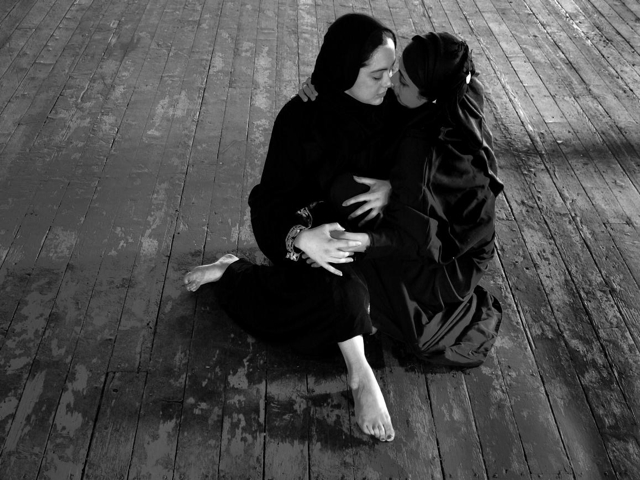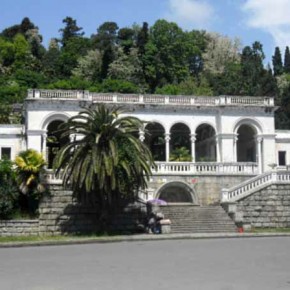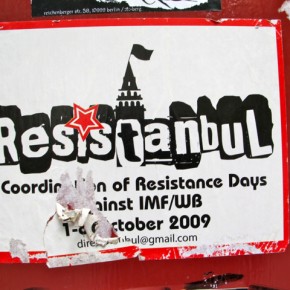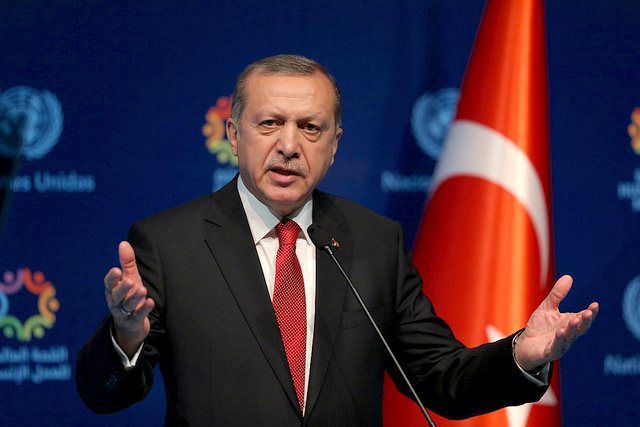It was a simple black-and-white shot of two veiled women tangled up in an intimate embrace, their lips only an inch apart. Some hailed the photo as groundbreaking for addressing issues of gender and sexuality in Islam. Others criticized it as deeply Orientalist, if not defiant of Islamic values.
But for Yemeni artist Ibi Ibrahim, what mattered the most was that the piece – for which he received a Gay and Lesbian Alliance Against Defamation (GLAAD) award last year – broke the silence and opened a dialogue on one of the most taboo subjects in the Middle East.
At first glance, Ibrahim, 24, may seem like the typical emerging artist you would expect to come across in the vibrant New York art scene: Shaggy-haired, scruffy with a quiet, somber demeanor and an overcoat that appeared three sizes too big for him.
But his background is anything but typical. A professional photographer since 2007, he was born in Yemen to a diplomat father and was raised between Libya, Iraq and the United Arab Emirates before moving to the United States in 2004 to pursue his art and photography.
Much of Ibrahim’s work is a reaction to his conservative Islamic upbringing. “My work focuses on issues deemed taboo in the Middle East such as feminism, gender inequality, homosexuality…basically stuff that is enough to get my head on a platter,” he said on a rainy Thursday afternoon as we sat down to talk in an airy tea house in Manhattan’s Lower East Side.
It took Ibrahim a while to remember what first piqued his interests in confronting Islamic and Arab norms regarding identity, individuality, and homosexuality. “I guess it’s the conflict that we Arabs are born into and have to deal with from an early age: Society conflicts, love conflicts, tradition conflicts, religion conflicts, family conflicts, identity conflicts …all this makes you stop and question things. I used my camera to ask questions and find answers.”
The conflict he mentions is present in all of his artworks, but perhaps most of all in Fatima, the photo series described above, which chronicles the physical and emotional abuse of a Muslim woman by her husband and her eventual retreat in the arms of her female lover.
‘Fatima’ was received warmly among New York art connoisseurs and eventually earned Ibrahim the title of 2010 Best Emerging Artist at the GLAAD outauction in December.
For Ibrahim, this marked a turning point in his career.
“My work was showcased and auctioned alongside those of Salvador Dali and Pablo Picasso … It’s a huge thing. It’s mind-blowing,” he says. Soon after he won the award, Ibrahim received an offer to be represented by Janet Rady Fine Art in London. “Not that many artists are as fortunate”.
But for many Middle Eastern artists and critics, such as Shahpour Pouyan, ‘Fatima’ lacks artistic merit as it reinforces Western stereotypes of the oppressive Muslim man and the oppressed Muslim woman, or in the words of literary critic and scholar Gayatri Chakravorty Spivak, “white men saving brown women from brown men.”
Only in this case, it is the white woman stepping up to the plate.
“The Fatima series is awash with elements that are cliché yet problematic in an insidious sort of way,” Pouyan says. “Everything about the series brings to mind orientalist aesthetics of the colonial era, during which time it was in vogue to depict Middle Eastern subjects in a sensationalist light to titillate western sensibilities.”
Pouyan, who is currently based in New York, believes that many Middle Eastern and Arab artists vying for fame and fortune in the city feel a certain pressure to cater to the demands of the art market as a means of self-promotion. This, according to Pouyan, has given rise to a superficial culture blighted by self-orientalization and ethnic marketing.
“There is a marked incongruity within the series, which all the more exposes it as fake and staged. For instance, the veiled passive women huddled together on the floor, which are supposedly aimed at representing the backward Middle Eastern society, clashes sharply with the airy loft-like spaces and wooden flooring, which are found only in the West. It is all very neat and tidy. Very superficial. Very Hollywood-like.”
“Art isn’t something you can cash in on,” he adds. “Without a certain level of intellectualism and awareness of the consequences of what your work represent, it retards the discourse and cultural cultivation.”
Ibrahim initially denied that his art seeks to appease art collectors and gallery owners, but nevertheless conceded that the desires of the art market hold sway in how his work turns out. “I don’t want to be poor,” he says. “At the end of the day, artists need to survive. They need to live and they have to do something that would sell in the market.”
In keeping, Ibrahim believes Middle Eastern artists are not always the face of a society, but of themselves. “In my work I represent myself, my mind, and my thoughts. You are instantly politicized when you come from the Middle East, unlike the American artist, who is at liberty to make art without fear that it would be perceived as a portrayal of his society.”
Ibrahim shrugs off accusations of orientalism, in much the same way he evades questions about his sexual orientation. “I am against any such labeling. I believe it is a way of passing judgment on others. And who am I to judge people? What I judge about people is their sense of style.”
Another topic Ibrahim was uncomfortable discussing was his relationship with his father, a former diplomat and ambassador under the government of former president Ali Abdullah Saleh. “I’m still struggling with the idea of having him as a father. Because he never offered me love, he never offered me mentorship, he never offered me peace, so it very complex. He puts me down and it makes me doubt myself even after I managed to build a name for myself, I’m still this vulnerable lost artist.”
He changed his family name and ended his relationship with his father, last year. “I felt that no matter what I do I will be a part of him and a part of what he has never approved of so I couldn’t carry the struggle of being named after him as an artist.”
The revolution in Yemen last year, Ibrahim says, has reverberated within the country’s frail art scene. “Yemen is gradually changing for the better and, unlike the situation in Egypt, it is showing signs of consistency. When you see people walking on their streets, protesting and giving their life for their country and their people. It inspires you to do what you want, it inspires you to become the outspoken journalist or artist or even housewife.
I was already outrageous in my art, but after the revolution in Yemen, my audience should expect me to take my work to the extreme next level.”
But it hasn’t been easy. He recently wrapped up his first short film the ‘Sounds of Oud’ – which tells the story of an Arab couple who move to the United States and face various difficulties as they try to assimilate. In a lush erotic escapade, the film discusses elements of betrayal, desire, and devotion, which exist within the walls of many Middle Eastern households. ‘Sounds of Oud’ was screened at New York’s Anthology Film Archives without a hitch, but when Ibrahim tried to screen it in the Middle East, things did not go as smoothly.
“I was approached by the Gulf Film Festival. They seem to be very interested in my film. They complimented my trailer and were really psyched about the idea of showing a film from Yemen. But I after I sent my film to them they rejected it. I was confused because it was them who approached me. I don’t know why they backed out. I personally feel the festival was not comfortable about showing the reality of many Arab and Muslim families.”
Despite the prevailing obstacles, Ibrahim still feels a strong connection with his native country and the Middle East. “There may be a few setbacks along the way, but what I can say for sure is that I believe the Yemeni society is more liberated than ever and I, as a Yemeni and as an artist, I will fight for it to remain this way. I want to open dialogues. I want to aspire and inspire. I believe I have a strong voice and I will use it towards liberating my society.”
Photograph courtesy of Ibi Ibrahim. For more information, visit his tumblr.






nice